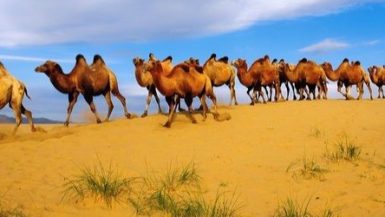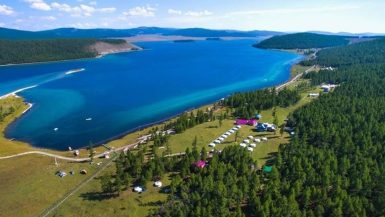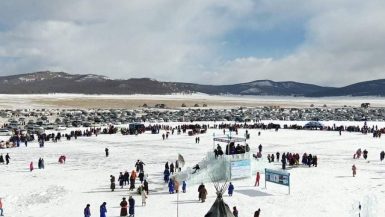Lake Khovsgol National Park preserves a place of outstanding and pristine beauty where the Central Asian Steppe meets the Siberian Taiga. It has long been regarded as “Blue Pearl of Mongolia”. Lake Khovsgol is one of the 17 ancient lakes worldwide and is variously estimated an between 2 and 5 million years old. This exceptionally pritistine lake is 136 km long, 20-40 km wide, and up to 260 m deep; it contains nearly 70% of all fresh water in Mongolia. The only outlet river Eg flows to the Selenge River, that connects Lake Baikal with Lake Khovsgol. They are sister lakes.
In 1992, this stunning landscape were set aside as Lake Khovsgol National Park. In 2011, the whole territory of park was expanded to 1.180.270 hectares when the uppe headwaters of the Uur River were made a part of the park. In recent years, this spectacular landscape of water and mountains that is sacred to so many has become the destination of more and more travelers, from all around Mongolia and beyond.
Among 68 species of mammals, the Park is home to marmots, argali sheep, ibex, brown bear, wolf, wolverine, fox, Siberian moose, sable, roe deer, and perhaps even the snow leopard. Most of the 244 bird species visit to the park every summer, migrate long distances between their nesting grounds here and warmer winter refuges in distant countries. Because of cold winter climate dominates the park area, that is too harsh environment for most of the bird species to stay all year around in the region. Park visitors often see eagles, kites, swans, cranes, and a wide variety of ducks and songbirds.
Approximately 800 species of trees and plants have been found in the Lake Khovsgol basin.
Snow-capped peaks of two wonderful mountain ranges look down on the Lake. The Burenkhaan mountain range borders with Russia on the northern edge and contains the highest peak in the national park, called Munkh Saridag peak (3491m) in Burenkhaan Mountain range.
The Park includes the complete Lake Huvsgul basin and contains the transition zone between the Central Asian Steppe comprised of forests and grasslands and the Siberian Taiga, which is dominated by forests of larch underlain with permafrost.





Leave a reply